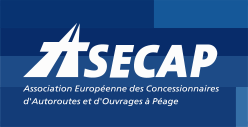SATIE
About SATIE
SATIE – Support Action for a Transport-ICT European large scale action – is a project funded by the European Commission, Directorate General Information Society and Media, under the Seventh Framework Programme (FP7) for Research and Technological Development. It will support the European Commission in the establishment of a European large scale action (ELSA) spanning research, innovation and deployment of Intelligent Transport Systems and Services for sustainable mobility and transport.Objectives
In order to accelerate the deployment of ICT (Information and Communication Technology) for sustainable, safe and efficient mobility and transport, based on an iterative consultation process of public and private stakeholders, the SATIE Support Action will prepare the way for the successful launch of a European large scale action ("ELSA"), as introduced in the 2009 EC Communication "A Strategy for ICT R&D and Innovation in Europe: Raising the Game". SATIE will explore the key elements of an “ELSA” and provide assistance for potential ELSA participants in the form of an "ELSA Handbook" offering guidelines for the design, construction and operation of an ELSA.During its course, SATIE will:
- Elaborate concepts and procedures to achieve the added value of a European large scale action;
- Raise awareness of and consult with key stakeholders across Europe regarding the possibilities of an ELSA for transport-ICT;
- Map existing implementations and possible future initiatives that could be integrated into an ELSA approach.
The SATIE Concept
The SATIE approach is based on establishing a partnership of national, regional and local key stakeholders from both demand and supply sides to share in the implementation of ICT solutions for mobility and transport at a larger scale than hitherto seen in Europe.
SATIE will establish an ELSA partnership community bringing together various committed actors, who will be involved in an iterative process of consultation to identify the following elements of a potential ELSA:
- European, national, regional and local actions;
- innovative procurement practices;
- European, national and regional funding instruments;
- European and national innovation platforms;
- R&D projects and other activities;
- The objectives of public and private stakeholders within the value network of ICT for mobility and transport.
The iterative process aims to specify an optimum ELSA model with regard to the added value for European innovation and Europe's economy. It will also promote the sustainability of the European transport system in view of its impact on the environment, safety and efficiency.
By linking innovative actions at European level, national and regional initiatives and the industry will benefit from cross-fertilization and be able to build on the experience of each other, short-cutting the innovation process to achieve quicker introduction of proven new ITS technologies.
Who is behind SATIE?
The kick-off meeting of SATIE on 7 September 2011 in Brussels brought together all the partners involved in the project. To achieve its goals, SATIE will rely on its partners, representing important stakeholders from both demand and supply sides. SATIE is coordinated by ERTICO-ITS Europe. The SATIE consortium is composed of the following partners:
- ERTICO - ITS Europe - multi-sector partnership
- ASECAP – road operators
- ANWB (The Royal Dutch Touring Club) - users
- EUCAR (European Council for Automotive R&D) – industry
- PTV (Planung Transport Verkehr AG) – industry
- IFSTTAR (Institut Français des Sciences et Technologies des Transports, de l’Aménagement et des Réseaux) – research organisation
- TNO (Nederlandse Organisatie voor toegepast-natuurwetenschappelijk onderzoek) – research organisation
- VTT (Valtion Teknilinen Tutkimuskeskus) – research organisation
- Trafikverket (Swedish Transport Administration) – public authorities
The ELSA Task Force
The iMobility Forum Steering Group founded an ELSA Task Force on 16 December 2009. The goal of the Task Force was to deliver a proposal to the European Commission on what an ELSA in Transport should address and how it should be organized. The Task Force organized a consultation with the demand side (authorities and users) and the supply side (industry) to assess the objectives of the demand side and the possible response of the industry. The proposal was delivered to the European Commission in October 2010 in the Report “Towards a Transport-ICT ELSA”. This ELSA Task Force report is the starting point of the SATIE project.
SATIE will also look at opportunities offered by Horizon 2020, the upcoming EU Framework Programme for Research and Innovation, once these are defined.
Further information:
SATIE project website |
ELSA Task Force report |
 |
ASECAP–SATIE press release about the kick-off of the project on 7 September 2011 |


 Theme:Acting to change driver's behaviour to reach vision...
Theme:Acting to change driver's behaviour to reach vision... The 51st ASECAP Study & Information Days will be held on 13-15 May...
The 51st ASECAP Study & Information Days will be held on 13-15 May...